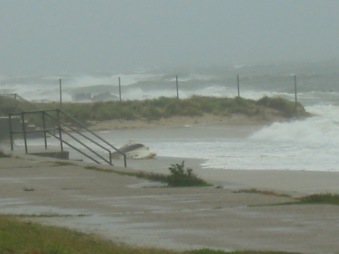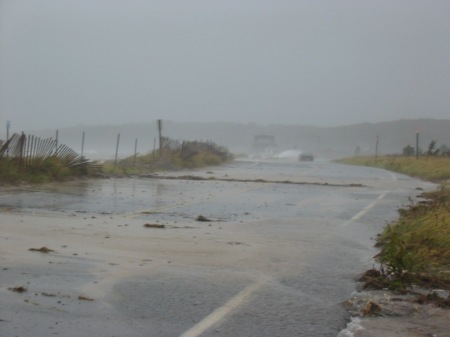It is hurricane season, so it is prudent to have a disaster plan, disaster preparations, emergency supplies that are ready to grab and go, and a prearranged inland location to meet family and group members if an evacuation become inevitable.

Disaster Plan – Decide where to meet, include written contacts, phone numbers, and other information in your ready to go kit. This information must in writing, because the hurricane’s damage, combined with the personal shock of the disaster, could cause a temporary memory loss. Cell phones may be lost, stolen, damaged, or unable to acquire a signal. There is much to consider when making a disaster plan. You can get more information at FEMA.gov Family Emergency Communication Plan
Disaster Preparations – Have an emergency survival kit that includes food, water and emergency supplies pre-packed and ready to go at short notice. Pack what is necessary to sustain each person for a minimum of three days and up to two weeks. Each member of your family also should have their own emergency survival kit. Keep the emergency kits or grab and go bags manageable in weight. For more information click on Planning, Preparing, Procurement and Providing. When there, scroll down to the Table of Contents for more specific topics.
How Hurricanes are Named
The National Hurricane Center, National Oceanic and Atmospheric Administration use a rotating list of 21 names per year, for six years, to identify hurricanes. Each year has its own set of names and is reused again in six years. The only time that there is a change in the list is if a storm is so deadly or costly that the future use of its name on a different storm would be inappropriate for reasons of sensitivity (Tropical Cyclone Names, National Hurricane Center). For example, Hurricane Sandy’s name is retired.
2016 Storm Names
| Alex | Fiona | Karl | Paula |
| Bonnie | Gaston | Lisa | Richard |
| Colin | Hermine | Matthew | Shary |
| Danielle | Ian | Nicole | Tobias |
| Earl | Julia | Otto | Virginie Walter |
When there are more than 21 named storms, the Greek alphabet is used.
Storm News
Fiona and Gaston are currently making their way across the Atlantic. This makes seven named storms this year. Hurricanes have strong winds, storm surges, hail, torrential rains, and lightning. They can produce tornados, flooding and wide spread damage. They create dangerous conditions after they pass too, such as injuries, spreading of diseases, mold, destruction of personal and  business property, and the contamination of drinking water and food supplies.
business property, and the contamination of drinking water and food supplies.
Shock, confusion and chaos are common after a major catastrophic event such as a hurricane or a tornado. Becoming separated people worry anxiously about their absent loved ones. FEMA, the Red Cross, the CDC and the Emergency Disaster Preparedness industry all recommend having an emergency preparedness plan and supplies and provisions of food and water.
Before a Storm Approaches
PLAN ahead have a written list of phone numbers so you can communicate with your family. Put this list in a waterproof container and put it in your survival kits. Remember to text instead of talk. The reason is that talking takes up more phone time and jams the systems. Have a pre-arranged meeting place. If you or a family member become separated and or lose phone service, your loved ones can meet you at this location. (Family Emergency Communication Plan)
PREPARE an emergency kit or survival kit for each family member. The essential contents of the emergency kit will contain many items; it could be beneficial if there is duplication of some items. For a list of recommended contents click here.
Provide enough food, water and supplies for a disaster for at least three days and up to two weeks. It is highly recommended to have a week or two weeks’ worth of long-term food and water. Once the power goes out, food will spoil rapidly.
Contaminated water will ruin your boxes of food. Having canned goods will be too heavy to take with you if you must evacuate. A family of four requires 84 meals per week (3 meals per day x 4 people x 7 days).
Water weighs about eight pounds per gallon and takes up a lot of space. For example, a family of four using one gallon of water per person, per day, will consume 28 gallons of water per week.
One practical solution is to have lightweight, dehydrated or freeze-dried USDA quality food, which is contained in Mylar pouches and further protected by food grade plastic buckets. Long-term food can have a shelf life from five to 25 years. A variety of foods exists from breakfasts, lunches and dinners to desserts and drinks. Some varieties can be cooked in the pouch with serving sizes as small as two servings per pouch.
Water, is a necessity for life, and while lugging 28 gallons of water from place to place may not be practical, carrying a few bottles of water and having a lightweight portable water filtration or water purification system with you is. Have water bottles or lightweight water packets with your supplies. Flooding and power outages may make water unsuitable to drink. Municipal water sources may be contaminated. Therefor it is in your best interests to have your own supply of water and a backup water filtration or a water purification system.
Visit Just Us Enterprises for all your emergency, disaster, preparedness and outdoor supplies. We provide links to reputable disaster agencies and closely follow or exceed their recommendations.


